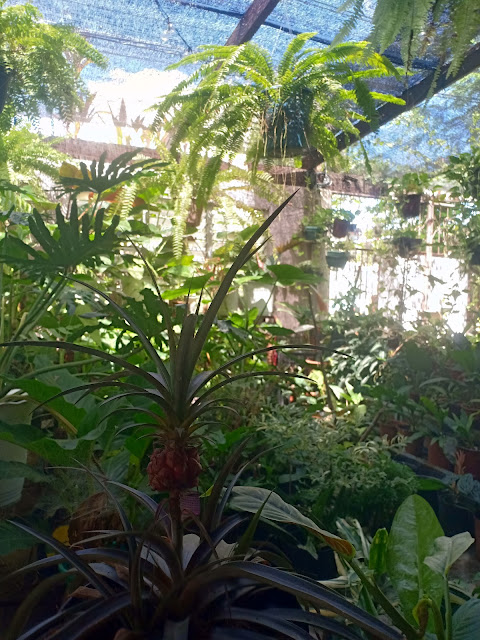Between the late 19th century and early 20th century, cholera ravaged the Philippine archipelago, the outbreak being part of the wider Asiatic cholera pandemic. This folk tale about the origin of cholera was collected and documented by American teachers Berton L. Maxfield and W. H. Millington in the spring of 1904, when they were stationed to the island of Panay. Mr. Maxfield was assigned to teach in what is now Iloilo City proper, and Mr. Millington at Mandurriao, now a district of Iloilo City, on the island of Panay in central Philippines.
The Origin of Cholera: A Folktale from Panay Island (Folk Story #2)
A Retelling by Christian George Acevedo
Sweat dropped from Tanag's forehead as he treads the country road amidst the sweltering heat of the midday sun. Drought has withered the field that he tilled; once abundant with yearly produce, the earth now cracked and had squeezed every bit of life out of it. The famished brigands, now hungrier than ever with this famine and plague, raided his village and took every food and livestock. Tanag was left with nothing. The wells, too, are poisoned, and it seems every villager who drank from eat turned blue and perished in a night's time.
"This village is cursed!" he lamented. "God has forsaken us!"
In no time, when every villager has gulped the water from the village well, one by one they fell ill. First they turned feverish and repeteadly excreted fluid. Then they vomitted incessantly until delirium took the better, until finally they gasped their last breath. Only Tanag, who refused to drink the water from the well, survived. With no more food to eat and with his tadyao empty of rainwater, he decided to abandon the village.
Tanag walked for miles and miles. Weakened by thirst and hunger, dusk found him by a small brook with a sheltered bridge. The brook opens up to the sea. The refreshing view of the sunset left with a glimmer of hope.
"I hope tomorrow i could find a job or a shelter," he prayed.
He wanted to gather some fish to sup that night, but he was mortified at the sight of them all dead! He never dared drink the water, no matter how thirsty he was for fear that it was contaminated.
Exasperated, Tanag rested early and decided to sleep at the sheltered bridge. But it eventually occurred to him that the bandits might pass by and hurt him. So, he settled beneath the bridge where a payaw ( a bamboo raft with nipa cover) was tied. He thought it would be wise to get down there, where he could not so easily be seen.
That night, the moon was full and casted a beam that left the brook glistening. Tanag was, nevertheless, left sleepless as mosquitoes attacked him incessantly.
In the wee hours, he heard heavy steps upon the floor of the bridge, and by the moonlight he could see a huge giant with a long club approaching.
A little later another giant arrived, his steps heavier than the first. Tanag, filled with fear, never dared move,. The silence of dawn made it easy for Tanag to hear their conversation.
"Did you kill many people?" the first giant asked.
"Yes, I dropped my poison on the food, and in a short time those who ate of it were struck by cholera and died. And how are you getting along yourself ?" the second giant answered.
"At first I killed many people with my poison, but I guess they they have found out an antidote for it,” the second giant was disappointed.
"What is that ?"
"The root of the balingay tree" he answered. "They boiled in water and suddenly their stomach ache was gone, their loose bowel was cured, and their fever subsided! It is very powerful antidote that the poison has no use." the first giant replied.
"That does it! These humans are very clever. But they will never know that there is a more powerful potion against our spell!" said the second giant.
"What is it?" Asked the first.
"The root of the alibutbut tree!" the second giant revealed.
"That shrub with the small, white flowers?"
" Yes, that plant. They thought it's of no use, just an ornament in the backyard. But if they boil it in water and drink it, they would heal of the disease that we're spreading. And many more diseases! Luckily, no mortal know about this antidote, and so they will just keep dying while we drop poisons on the wells, and the rivers and the fields. And then one day, this entire island would be ours!"
Unknown to them, Tanag heard every thing that they muttered. As dawn neared, the giants went to the shore, where many people were fishing with their nets. The giants flung their poison on the fish, and then disappeared from Tanag's sight.
"No, it's the giants who were causing all these maladies and deaths!" he concluded. "I must do something for these people. And for myself too!"
That very day, he searched the forest for the roots of the balingay and alibutbut trees. After gathering these herbals, cooked them and bottled them.
But Tanag was clever. To convince people to drink his product, he went around announcing that he is a well-trained doctor who will protect every from the deadly disease.
"No cholera would ever strike you if they drink this potion," he told people as he peddled his concoction.
True enough, those afflicted by the malady who took his medicine were cured of the disease. Many people flocked to Tanag and he earned so a lot of money that he became a wealthy man.
What became of the giants? With less and less men were dying from their spell, they became disappointed and retreated to the mountains, never ever stepping foot on the lowlands again.
©️ Christian George Acevedo
Art by Cathlen Artuz
Reference:
Visayan Folk-Tales (1906) is by Berton L. Maxfield and W. H. Millington.






































